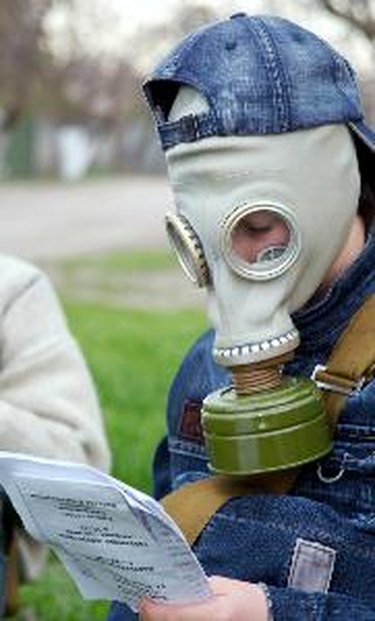
Soil is considered toxic when it contains contaminants that are harmful to humans or the environment. Soils can contain dangerous levels of lead and arsenic that come from various products leaching into the soil. Soil testing tools can help homeowners determine whether they have soil toxins. Some governmental and nonprofit organizations provide free soil testing services.
Testing Purposes
Video of the Day
Soil cleanup can be very costly, so soil tests help homeowners determine whether the soil cleanup benefits outweigh the costs. Some toxic soils are so dangerous that they can cause major health problems. For example, at the Hanford, Washington, nuclear cleanup site, radiation experts found that the soils had so much radiation that the soil could kill someone on contact.
Video of the Day
General Toxin Testing
Companies that specialize in toxic soil testing will look for heavy metals, carcinogenic substances, fuel additives, radioactive substances, pesticides poisons and excessive fertilizer. These tests determine the quantity of the harmful substances and how likely it is that these substances will harm those who come into contact with them. Some contaminants are highly toxic to all humans because they release fumes that can cause health effects when inhaled. Other substances are harmful only if individuals come into contact with the soil. When testing for these toxins, only test to the depth at which children will get in contact with these toxins. Garden soils should be sampled at least 4 inches deep, since plants can take these pollutants up and spread them throughout the ecosystem. When testing the soil, collect samples from several areas to locate the source of the soil contamination. Do not mix several samples into one sample because this can skew the test results.
Lead Testing
Lead is a prevalent toxic substance in soils. Torn-down old buildings can contain leftover lead that can accumulate in dangerous levels within fruits and vegetables grown in the garden. Soils develop large quantities of lead when industrial sludge with heavy metals raises the lead quantity, when lead leaches off of old plumbing pipes and in old orchards where lead arsenate was used. When testing for lead, property owners must collect samples from several parts of the property. Use a nonmetallic scoop and a nonmetallic container for collecting the soil. Lead concentrations reach their greatest at the top 2 inches of soil. The tests will determine the total parts per million, with more than a thousand parts of lead per million indicating a high concentration. Many universities and municipalities have services that will test the soil for various characteristics.
Arsenic Testing
Toxic soil tests might also become necessary for homes that have pressure-treated wood and children. Pressure-treated wood sometimes contains arsenic, a deadly poison, which leaches into the soil. Children playing in the soil might be in danger of arsenic poisoning. The methods for collecting soil to test for arsenic are the same as collecting soil for lead testing.
- Washington Department of Ecology: Lead and Arsenic
- Content 4 Reprint: Soil Testing Lab Helps Determine Cost of Soil Cleanup
- University of Minnesota: Lead in the Home Garden and Urban Soil Environment; Carl J. Rosen; 2010
- Wall Street Journal: Toxic Soil Shows Rigors of Nuclear Cleanup; Justin Scheck; 2010